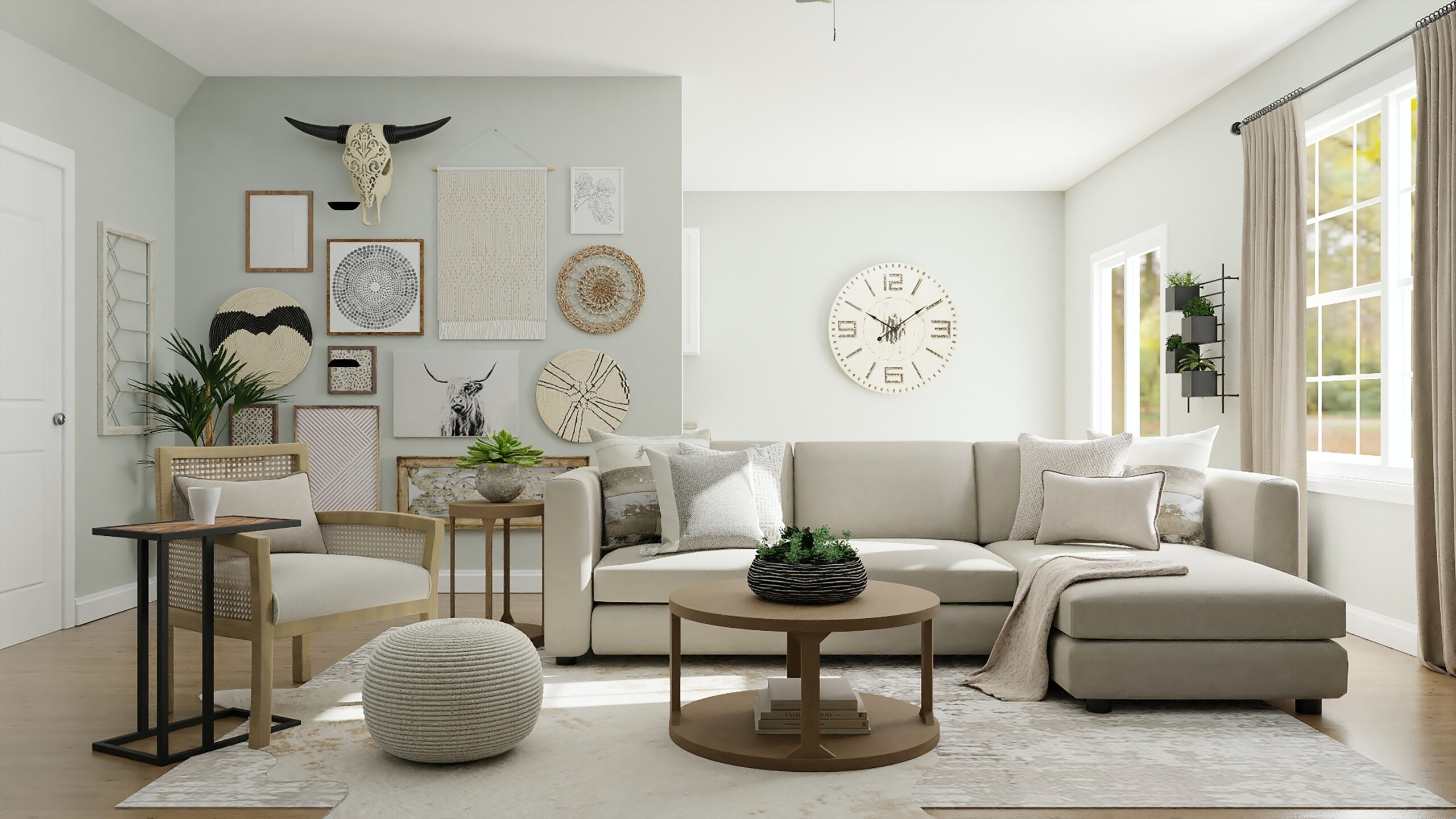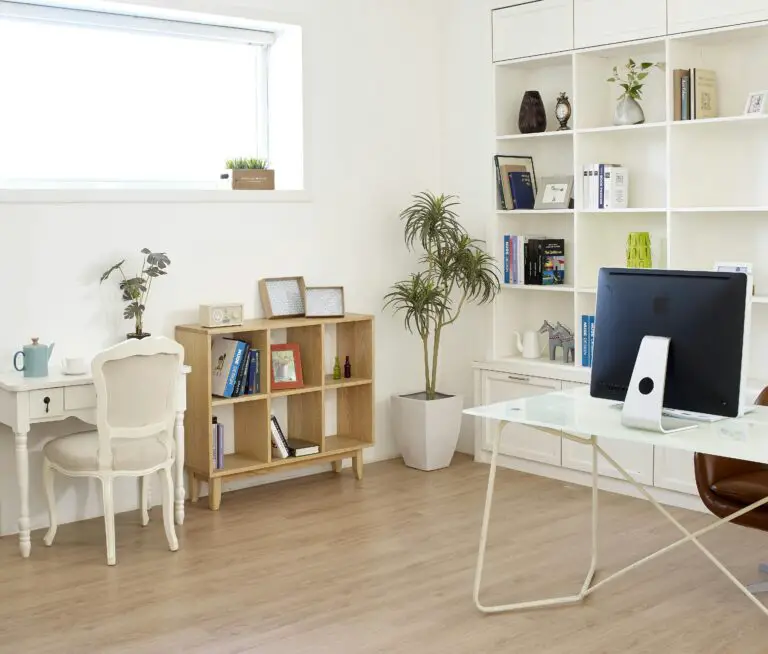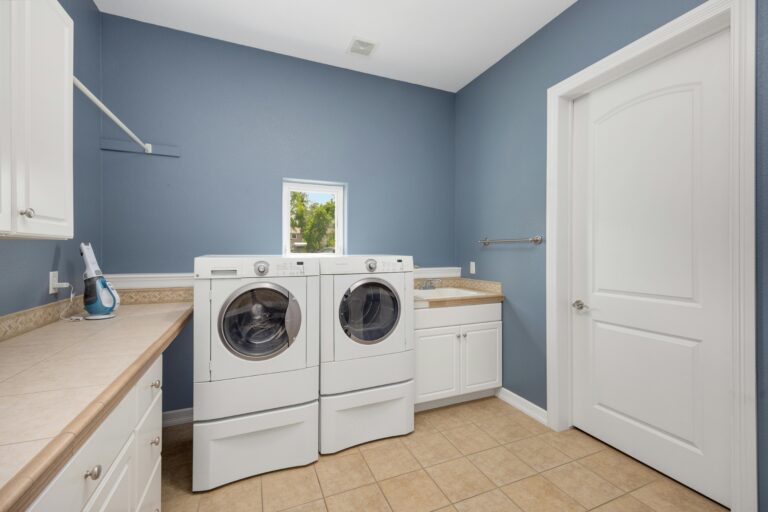When it comes to interior design, the living room serves as the heart of the home – a space where we gather, entertain, and unwind. Among the numerous ways to elevate the ambiance of your living room, creating a captivating gallery wall stands out as a unique and artful approach.
A gallery wall, thoughtfully curated with an array of artworks, photographs, and memorabilia, has the power to reflect your personality, infuse warmth, and add a touch of creativity to your space.
From selecting the perfect artwork to arranging them harmoniously on the wall, we’ll cover every aspect of the process, ensuring you achieve a gallery wall that not only complements your living room’s decor but also tells a story about you and your passions.
I. Preparing for Your Gallery Wall
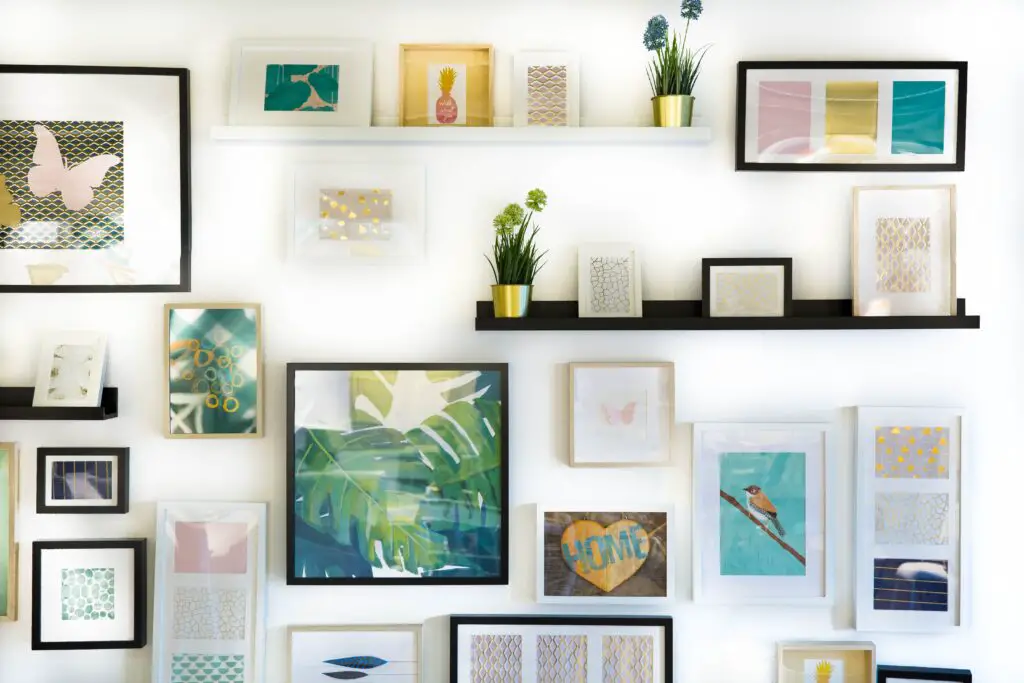
A. Assessing Available Wall Space
Before diving into the process of creating your gallery wall, it’s essential to assess the available wall space in your living room. Measure the dimensions of the wall and take into consideration the surrounding furniture placement and traffic flow. A gallery wall should be positioned where it can serve as a focal point, drawing the eyes of anyone entering the room.
B. Choosing the Right Location for the Gallery Wall
Selecting the ideal location for your gallery wall involves careful consideration of the room’s layout and natural lighting. Identify areas that complement the overall flow of the living room and ensure that the wall gets adequate natural light or appropriate artificial lighting to highlight the artwork effectively.
II. Selecting Artwork and Frames
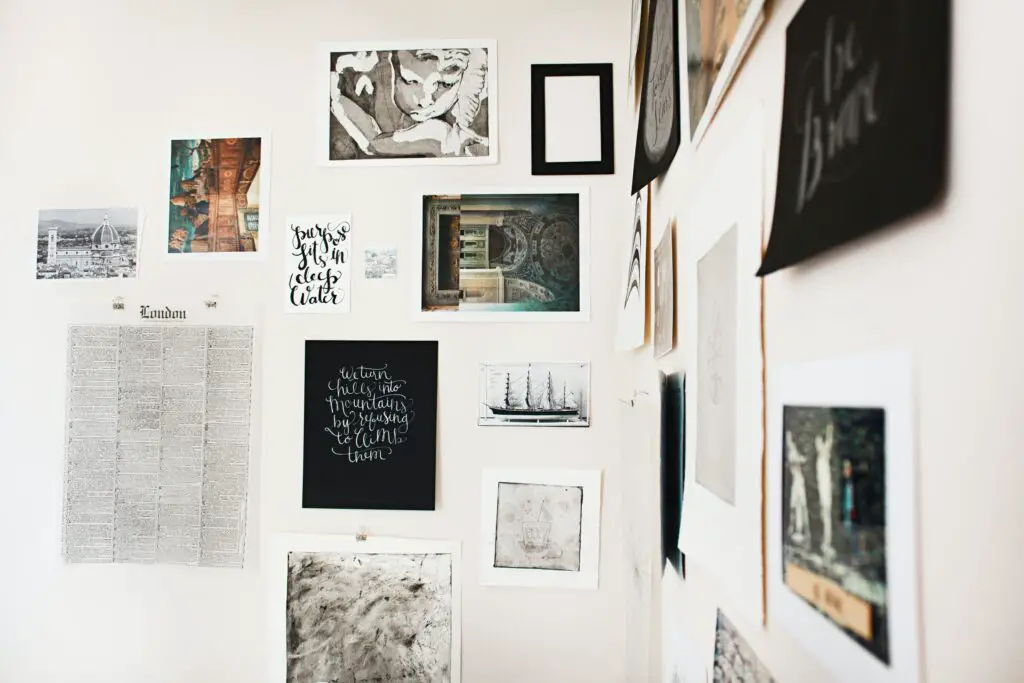
A. Choosing a Cohesive Theme or Concept
A cohesive theme or concept is vital for a visually appealing gallery wall. It could revolve around a specific color palette, a genre of art, or a sentimental connection shared by the artworks. Align the theme with your living room’s decor to achieve harmony and a sense of unity.
B. Mixing and Matching Artwork Types
Experiment with various types of artwork to add depth and intrigue to your gallery wall. Combine paintings, prints, photographs, and other art forms to create an engaging visual experience. Strive for a balance between color, texture, and size variations to keep the composition visually captivating.
C. Selecting Appropriate Frames and Matting
The right frames and matting can elevate your artwork and tie them together cohesively. Consider the material and color of the frames to complement your living room’s style. Additionally, explore options for matching or contrasting frames based on your preferred aesthetic.
III. Planning the Gallery Wall Layout
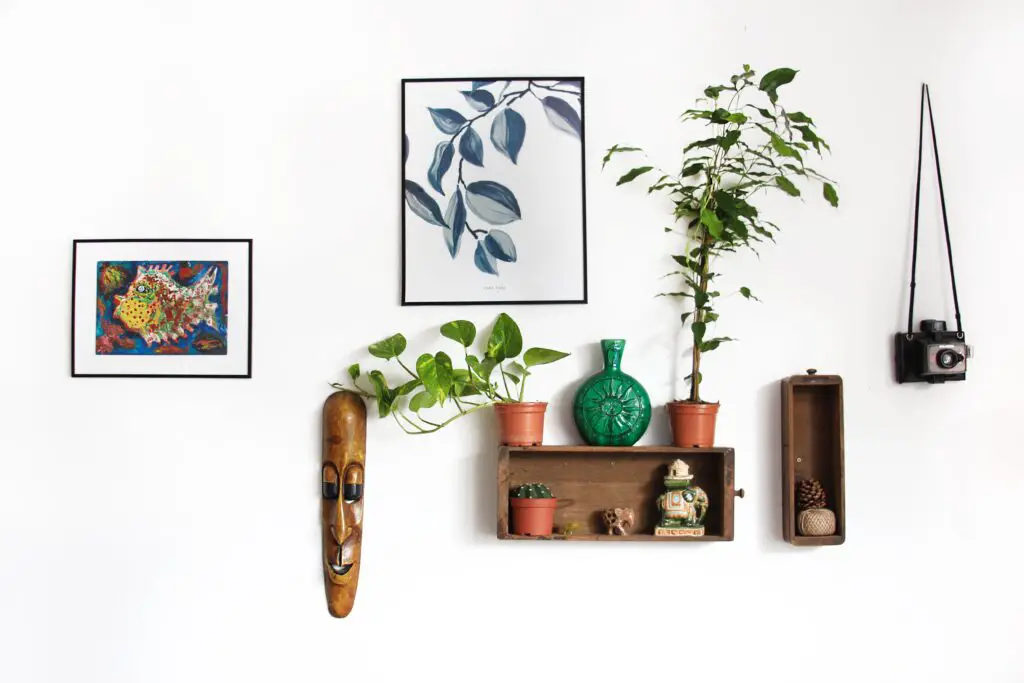
A. Creating a Mock-Up on Paper or Digitally
Before putting nails in the wall, create a mock-up of your gallery wall on paper or use online tools for virtual visualization. This will give you a chance to experiment with different arrangements without making any permanent changes.
B. Balancing the Composition
The composition of your gallery wall plays a crucial role in its overall impact. Choose between symmetrical and asymmetrical arrangements based on your preferences and the available space. Use a focal point to anchor the display and build the arrangement around it.
C. Playing with Spacing and Proportions
Achieve a polished look by carefully spacing out the artworks on your gallery wall. Whether you opt for equal spacing between frames or varied proportions, ensure that each piece has enough breathing space to stand out while contributing to the overall coherence.
IV. Hanging the Artwork
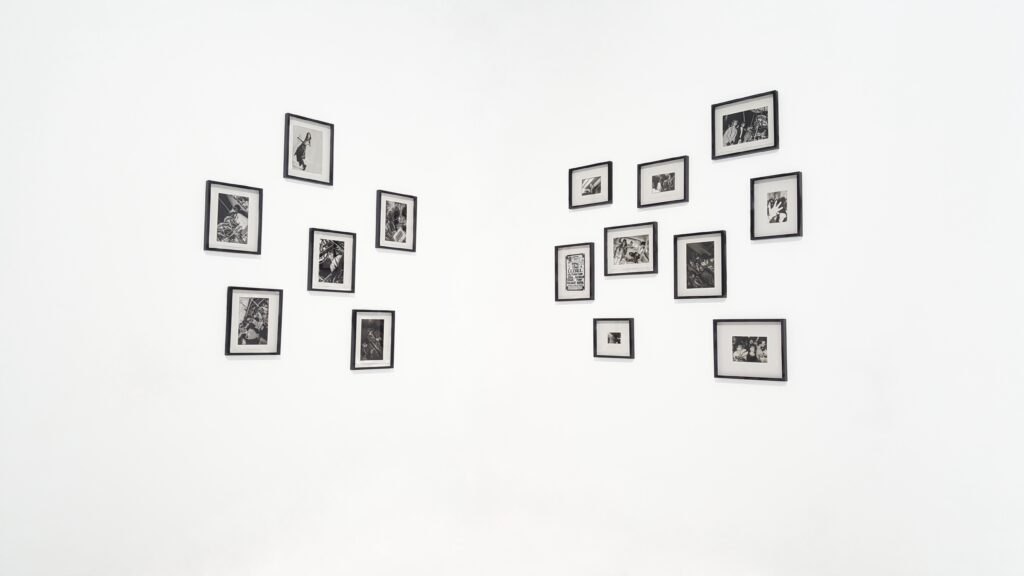
A. Gathering the Necessary Tools and Materials
Before starting to hang your artwork, make sure you have all the necessary tools and materials. A level measuring tape, hammer, nails, and wall anchors (if needed) are essential for a successful and secure display.
B. Properly Hanging Different Types of Artwork
Hanging heavy frames and wall-mounted sculptures requires proper techniques to prevent accidents and damage. Explore various hanging methods, such as gallery rails or picture ledges, for flexibility in rearranging your gallery wall.
C. Ensuring Alignment and Straightness
Achieving a well-aligned and straight gallery wall is crucial for a polished look. Use a level to ensure your artworks are hung evenly, and make adjustments as needed to avoid crooked frames.
D. Managing the Gallery Wall Over Time
As your art collection grows or changes, you may want to update your gallery wall. Learn easy methods for adding or rearranging artwork without damaging your walls or frames.
V. Complementing the Gallery Wall
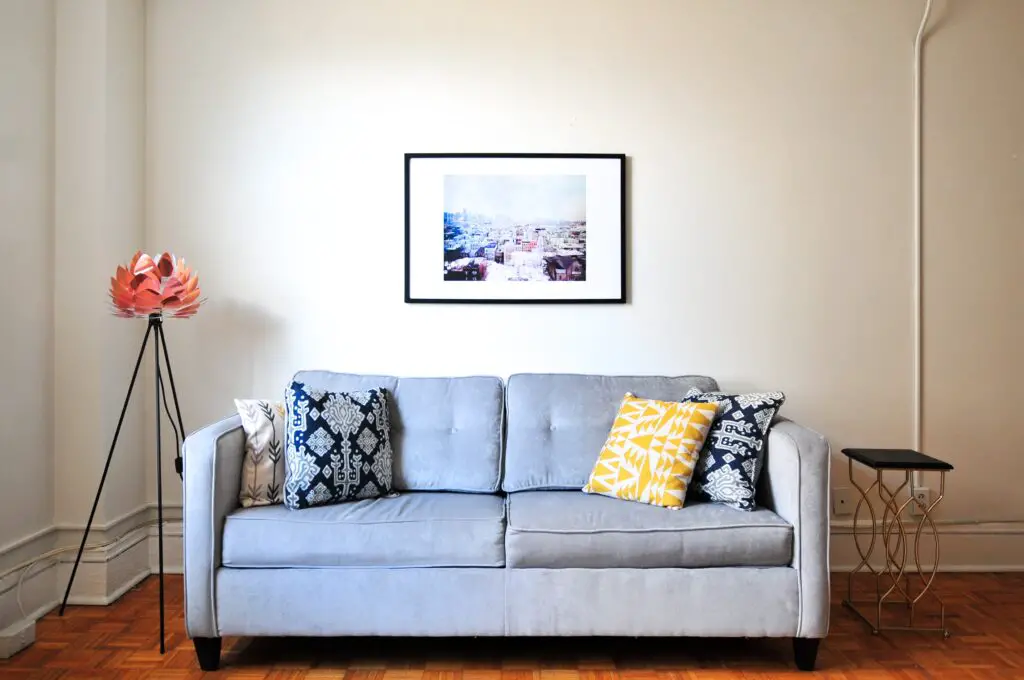
A. Accessorizing the Surrounding Area
A gallery wall can be enhanced further by adding complementary accessories to the surrounding area. Accent pillows, throws, and rugs can tie in the gallery wall with the rest of the living room’s decor.
B. Appropriate Lighting for the Display
Proper lighting is essential to showcase your artwork effectively. Use spotlights to highlight individual pieces and set the mood with ambient lighting to create a cozy and inviting atmosphere.
C. Maintaining a Cohesive Living Room Design
Ensure that your gallery wall complements the overall design of your living room and doesn’t overpower the space with too many elements. Strike a balance between the gallery wall and other decorative items in the room.
VI. Troubleshooting and Tips on Gallery Walls
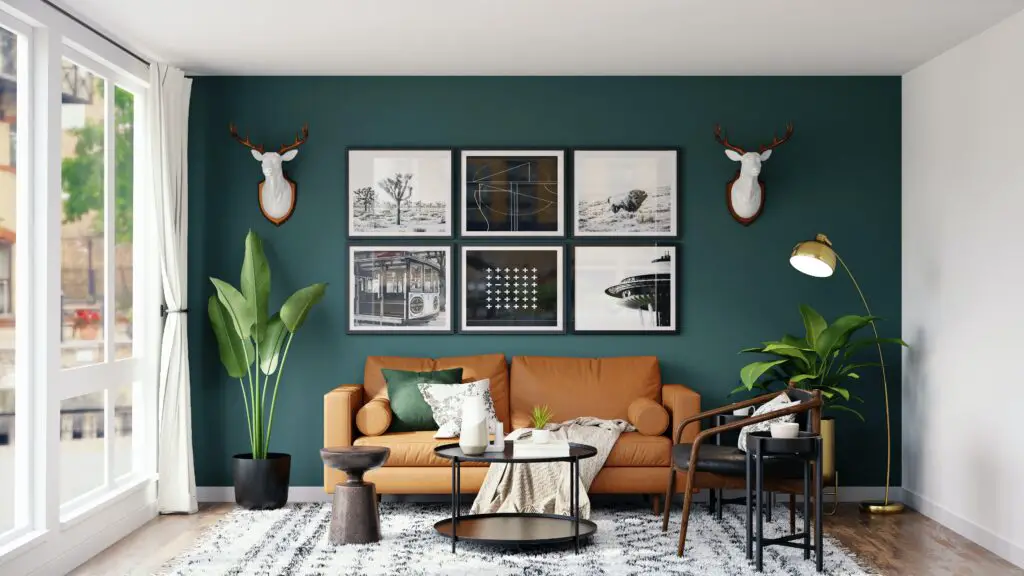
A. Dealing with Limited Wall Space
If you have limited wall space in your living room, consider creating mini gallery walls or opting for vertical arrangements to make the most of the available area.
B. Handling Various Wall Textures
Different wall textures may require specific hanging methods. Learn about adhesive strips for temporary displays and wall anchors for heavy items on drywall to avoid causing damage.
C. Achieving Balance and Flow in the Arrangement
Step back and reevaluate your gallery wall periodically to ensure it maintains a balanced and harmonious flow. Don’t hesitate to make adjustments if something feels off.
Conclusion
With the tips and techniques outlined in this guide, your gallery wall is a reflection of your personality, passions, and creativity, making it a focal point that will spark conversations and delight anyone who enters your living space.
Remember, the key to a successful gallery wall is to let your personality shine through while maintaining a cohesive and visually pleasing arrangement. Be open to experimentation, and as your collection grows or evolves, update your gallery wall to keep it fresh and exciting.
FAQs – Frequently Asked Questions
1. How do you choose the right location for a gallery wall in the living room?
When selecting the ideal location for your gallery wall, consider factors such as available wall space, furniture placement, and traffic flow. Opt for an area that serves as a focal point, drawing attention to the display. Additionally, ensure the wall receives adequate natural or artificial lighting to showcase your artworks effectively.
2. Can you mix different types of artwork on a gallery wall?
Absolutely! Mixing and matching various types of artwork, such as paintings, prints, photographs, and other art forms, can add depth and visual interest to your gallery wall. Just be mindful of creating a cohesive theme or concept to maintain overall harmony.
3. What is the best way to hang different types of artwork?
Properly hanging different types of artwork requires considering their weight and size. For heavier frames and wall-mounted sculptures, use appropriate hanging techniques, such as gallery rails or picture ledges, to ensure stability and prevent accidents.
4. How can you achieve a balanced composition in a gallery wall arrangement?
Achieving a balanced composition involves careful spacing, alignment, and a well-thought-out arrangement. You can opt for symmetrical or asymmetrical layouts, depending on your preferences and available space. Use a focal point to anchor the display and build the arrangement around it.
5. Can I update my gallery wall over time as my art collection grows?
Absolutely! Your gallery wall is a dynamic and ever-evolving display of your interests and passions. You can easily add or rearrange artwork without causing damage to the walls or frames. Embrace the opportunity to refresh your gallery wall and infuse new life into your living room’s decor.
